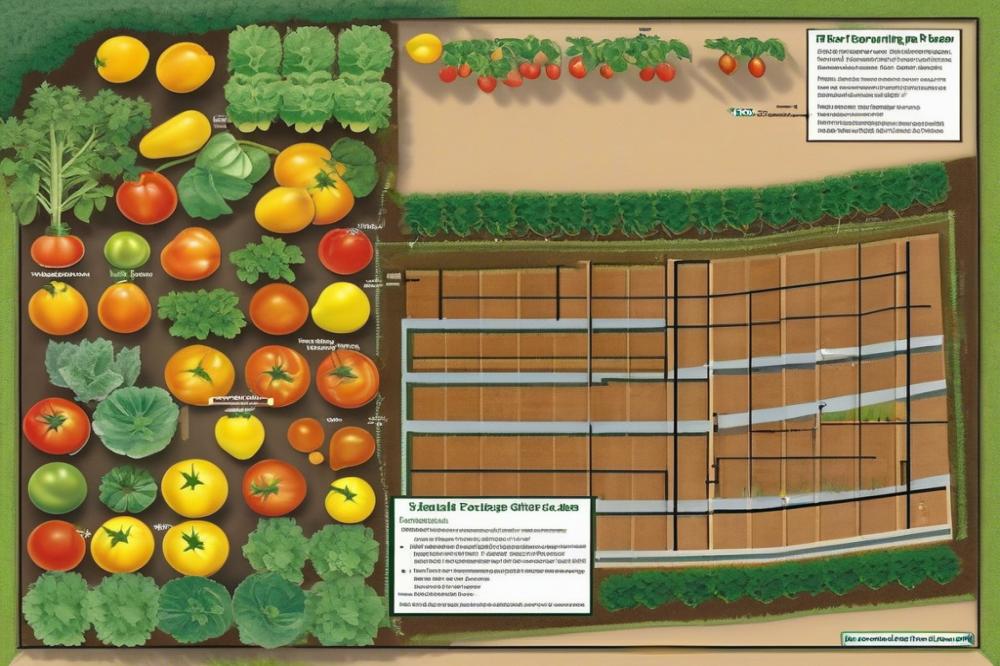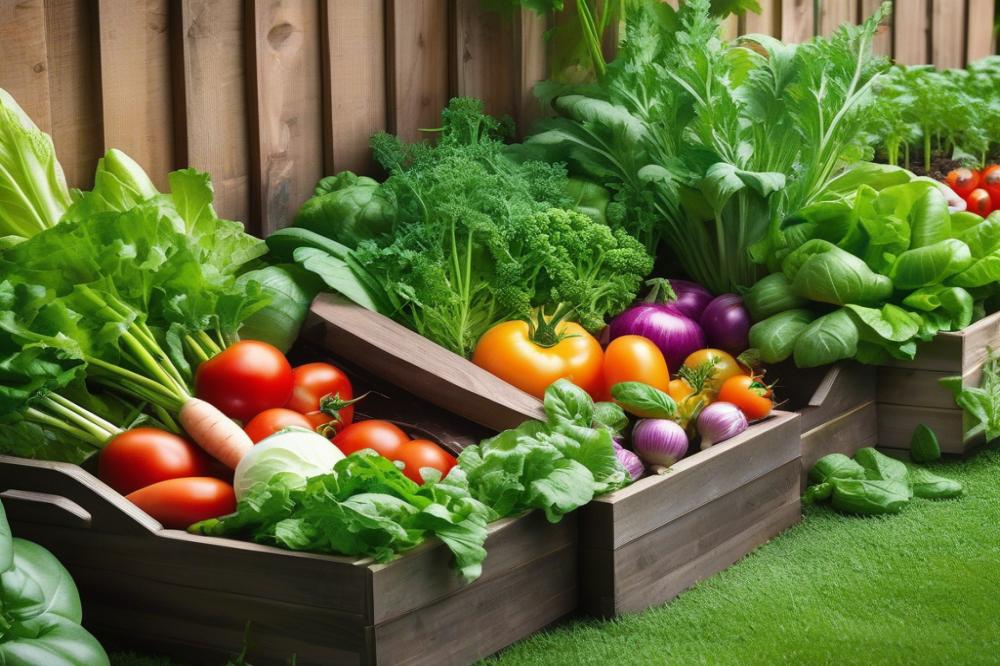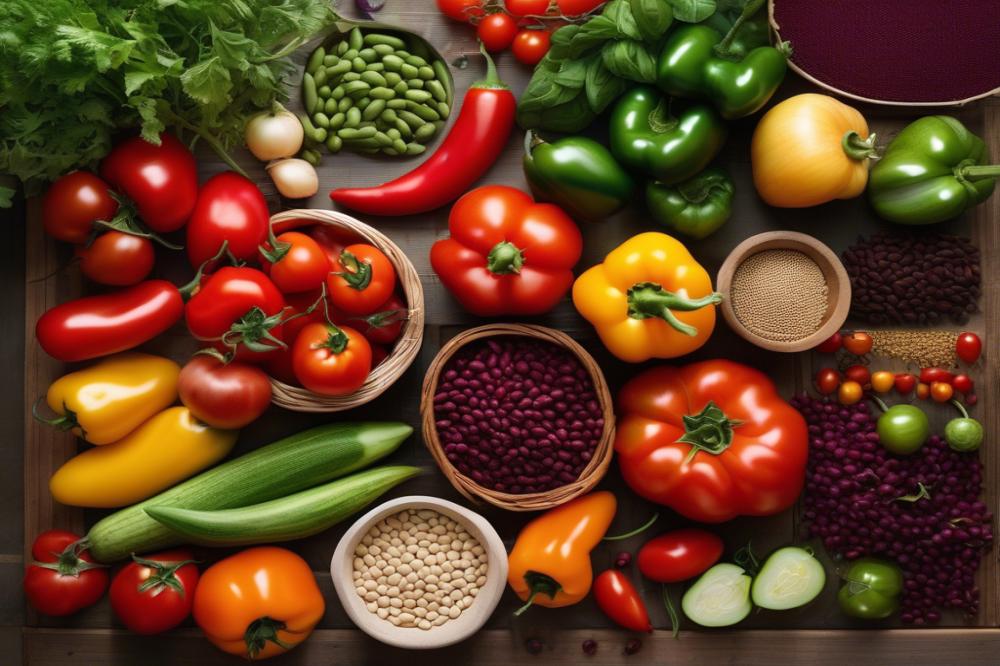Understanding heirloom tomatoes
heirloom tomatoes are special varieties that have been preserved through generations. Known for their rich flavors and stunning colors, they stand apart from the hybrids commonly found in stores. Many home gardeners love them for their vibrant tastes and the variety of shapes they offer. These tomatoes often come with unique stories and backgrounds, making them an exciting part of vegetable gardening.
Yellow Pear Heirloom Tomatoes hold a significant place in the hearts of gardening enthusiasts. Their small, pear-like shape and sunny color add charm to any garden. In addition to their beauty, they are also known for being sweet and juicy. These unique fruits can enhance salads or be a delightful snack right off the vine. Home gardening with these tomatoes is not just about growing food; it’s about connecting with traditions and enjoying the process.
Growing heirloom tomatoes comes with many benefits. For starters, they are typically grown using organic methods, which can be better for the environment. Many gardeners appreciate knowing their food is free from harmful chemicals. Moreover, these plants often exhibit resilience to pests and diseases due to their diverse genetics. Proper tomato care, such as considering soil health and sunlight requirements, can lead to a bountiful harvest. Learning about plant spacing and proper watering techniques can also significantly improve the yield in your garden. Overall, embracing heirloom varieties can enhance the experience of gardening and the quality of the produce. So, let’s explore some effective growing tips to get the best results with these marvelous plants!
Understanding Yellow Pear Heirloom Tomatoes


Description and characteristics of Yellow Pear tomatoes
Yellow Pear tomatoes are charming, small, and pear-shaped fruits. Their bright yellow skin catches the eye while their tangy flavor delights the palate. Typically, these tomatoes grow in clusters. They reach maturity in about 70 to 80 days from planting. The plants themselves are indeterminate, meaning they keep growing throughout the season until frost. This quality makes them perfect for home gardening. In terms of size, they usually weigh around one ounce each. Their vibrant color adds cheer to any garden.
Historical background of heirloom varieties
Heirloom varieties have a rich history that often spans generations. People cultivated Yellow Pear tomatoes since the 1800s. These tomatoes have made their way through family gardens, passed down and cherished. Heirloom tomatoes like these reflect a passion for preserving biodiversity in gardening. Gardeners value their rich heritage and unique traits. Understanding these vegetables deepens one’s appreciation for gardening as an art and a tradition. Growing heirloom varieties encourages the use of organic gardening practices and maintains the connection to nature.
Flavor profile and culinary uses
The flavor of Yellow Pear tomatoes leans towards a sweet and tangy balance. They are juicy, making them perfect for salads or fresh snacking. Many home cooks appreciate their unique appearance in dishes. These tomatoes add a vibrant pop of color when used in salsa. Their mild taste complements, rather than overpowers, other ingredients. Additionally, they can be roasted for a sweeter note. When creating sauces, Yellow Pear tomatoes offer a light, refreshing touch. Understanding their flavor can inspire new recipes for vegetable gardening enthusiasts. Also, pairing them with herbs like basil can elevate any dish.
Preparing Your Garden for Yellow Pear Heirloom Tomatoes


Choosing the Right Location and Soil Conditions
Finding a suitable spot for your heirloom tomatoes is essential. Look for an area that is well-drained. Heavy soil can lead to root rot. Ideally, choose a location with rich, loamy soil. This type allows roots to spread and access nutrients. A pH level between 6.0 and 6.8 is optimal for growth. Conducting a soil test can help determine the current condition of your garden bed.
Importance of Sunlight Requirements for Optimal Growth
Sunlight plays a crucial role in tomato care. These plants thrive in bright conditions. Aim for at least six to eight hours of direct sunlight each day. Too little sun results in poor fruit development. Watch out for any shade from nearby trees or buildings. Position these plants accordingly to avoid competition for sunlight.
Enhancing Soil Health Through Organic Gardening Practices
Healthy soil forms the foundation of successful vegetable gardening. Organic gardening methods improve soil structure and fertility. Adding compost enriches the soil with nutrients. Consider using aged manure from local farms to boost soil quality. Keep the soil diverse by rotating crops each season. Incorporating cover crops during off-seasons helps prevent erosion and adds organic matter.
Preparing the Planting Area and Soil Amendments
Get the planting area ready before seeding. Turn the soil to a depth of 12 to 18 inches. This loosens compacted soil and promotes root growth. Mix in compost or well-rotted manure for added nutrients. If the soil is heavy clay, adding sand can improve drainage. Create mounds or raised beds to further assist with water flow. A spacing of about 24 to 36 inches between plants allows for optimal air circulation and pest control.
Planting Techniques and Plant Spacing


Best Time to Plant Yellow Pear Heirloom Tomatoes
Early spring is the ideal time for planting these heirloom tomatoes. Wait until all chances of frost have passed. Soil temperature should be at least 60°F for optimal germination. Planting too early can stunt growth. Late spring often provides the best conditions for thriving plants.
Proper Planting Depth and Techniques
Dig a hole that is about 2 to 3 inches deep. Place the young plant gently into the soil. Roots should be covered, but the lower leaves must remain above ground. This technique encourages stronger root development. Water the plant well after planting to help with settling. Consider using organic compost to enhance soil health and promote growth.
Recommended Plant Spacing for Healthy Growth
Maintain adequate spacing for each tomato plant to flourish. A spacing of 24 to 36 inches is suggested between plants. This distance allows for good air circulation. Proper plant spacing helps reduce disease risk and creates a healthier environment. Crowded plants may compete for nutrients and sunlight.
Companion Planting Considerations
Think about what other plants can thrive alongside tomatoes in your vegetable garden. Basil is known to enhance tomato flavor while repelling pests. Marigolds can deter nematodes and other unwanted insects. These companions can contribute to healthy growth and effective pest control. Avoid planting tomatoes near crops like potatoes, which may attract similar pests. Always observe how plants interact to create the best gardening environment.
Tomato Care Throughout the Growing Season
Watering heirloom tomatoes requires careful timing. Consistent moisture is crucial. However, over-watering can lead to root rot. Aim for deep watering once or twice a week. The soil should be moist but not soggy. Consider using drip irrigation to deliver water directly to the roots. This method minimizes evaporation and helps maintain soil health. Morning is the best time to water. It allows plants to absorb moisture before the heat of the day.
Fertilization Tips for Heirloom Tomatoes
Choosing the right fertilizer is important for healthy growth. Organic fertilizers, like compost or well-rotted manure, are excellent choices. They feed the plants slowly and improve soil structure. Apply a balanced fertilizer at planting time. Once fruit starts to form, switch to one that is higher in potassium and phosphorus. This supports ripening and enhances flavor.
Support Systems: Staking and Trellising Methods
Providing support for your plants is essential. Staking can be done with wooden stakes or tomato cages. These methods keep plants upright and allow for better air circulation. Trellising is another option. It involves using netting or string to support the plants as they grow. Space your plants appropriately to prevent crowding. Good airflow helps reduce disease risk.
Monitoring for Signs of Stress or Health Issues
Regular checks on your tomato plants can catch problems early. Look for wilting leaves or discoloration. These may indicate water stress or nutrient deficiencies. Pests can also affect heirloom tomatoes. Be vigilant against aphids, hornworms, and whiteflies. Inspect the undersides of leaves, as pests often hide there. Early detection of issues can save your plants. Caring for your garden means keeping a watchful eye throughout the season.
Pest Control and Disease Management
Growing Yellow Pear heirloom tomatoes can be rewarding, but pests and diseases may pose challenges. Common pests that affect these tomatoes include aphids, spider mites, and tomato hornworms. These tiny beasts can quickly ruin your hard work. Keeping an eye on your plants is essential, especially during the growing season.
When it comes to organic pest control, there are several methods worth trying. One effective approach involves introducing beneficial insects. Ladybugs and lacewings can help keep aphid populations in check. Homemade sprays using garlic or hot pepper can deter many pests without harmful chemicals. Regularly removing any affected leaves also helps in minimizing infestations.
Identifying and Managing Common Tomato Diseases
Diseases such as blight, blossom end rot, and powdery mildew can affect your garden. Recognizing these issues early is crucial for successful tomato care. Blight appears as brown spots on leaves and can spread quickly. Keeping your plants dry helps prevent such diseases. Proper air circulation is vital. This can be achieved by ensuring adequate plant spacing and pruning as needed.
Blossom end rot shows up as a black, sunken area at the bottom of the fruit. It often results from inconsistent watering or poor soil health. Ensure a regular watering schedule and mulch your plants to maintain moisture levels. Addressing soil health with compost can provide essential nutrients, too.
Preventive Measures for a Healthy Crop
Preventing problems is always better than dealing with them later. Start by choosing disease-resistant varieties and preparing your soil well before planting. Practicing crop rotation can also reduce the risk of soil-borne diseases. Avoid planting tomatoes in the same spot every year. Aim for locations that meet sunlight requirements. Most tomatoes thrive in full sun, ideally receiving at least six to eight hours each day.
Healthy plants are less prone to issues. Regular monitoring is key, and inspecting leaves, stems, and fruits allows for early detection of pests and diseases. Following these organic gardening practices will help cultivate a successful vegetable gardening experience while ensuring the health of your heirloom tomatoes.
Harvesting and Storing Yellow Pear Heirloom Tomatoes
Signs of Ripeness and Optimal Harvesting Time
Ripeness in heirloom tomatoes is often a joyous sight. The Yellow Pear variety turns a lovely golden yellow when it’s ready. Look for a slight softness when you gently squeeze the fruit. Fading green shoulders indicate they’re at their peak. Timing is critical; harvest in the morning or late afternoon for the best flavors. Fruits tend to taste sweeter when picked at their fullest ripeness.
Proper Harvesting Techniques to Avoid Damage
Care is crucial when harvesting these delicate tomatoes. Use pruning shears or simply twist the stem gently to avoid bruising. Aim to leave a small portion of the stem attached. This helps extend shelf life and keeps them looking fresh longer. Be mindful of nearby fruits; unintentional bumps can cause damage. Additionally, avoid picking in wet conditions to reduce the risk of fungal infections.
How to Store and Preserve Your Tomatoes
Storage plays a key role in maintaining flavor and texture. Place ripe heirloom tomatoes at room temperature, away from direct sunlight. Refrigeration can alter their taste and make them mealy. For longer preservation, consider canning or making sauces. Both methods allow you to savor your harvest all year round. Freezing is another option; just slice the tomatoes and place them in airtight bags.
Tips for Enjoying Fresh Tomatoes in Meals
Using fresh tomatoes in meals can elevate any dish. Try slicing them for salads or incorporating them into salsas. Their sweet flavor complements sandwiches perfectly. Roasting enhances their richness, making them ideal for pastas or sauces. Fresh herbs pair beautifully with tomatoes, adding extra layers of taste. Serve them simply, drizzled with olive oil and a pinch of salt for a delightful snack. Gardening efforts result in delicious rewards when shared at the table.
Final Thoughts on Growing Heirloom Tomatoes
Recapping the essential tips can be helpful as you embark on your journey with these delightful fruits. Start with healthy seedlings, and pay attention to the right soil conditions. Proper watering habits are crucial, too; tomatoes thrive when their roots are evenly moistened, not soaked. Support systems also play an important role; using cages or stakes helps them grow upright and resist disease. Finally, watch for pests and take action before they become a problem. Observing your plants regularly can make a significant difference.
Embracing heirloom tomatoes in your vegetable gardening allows you to enjoy a taste of the past while supporting biodiversity. These varieties often have rich flavors and beautiful colors, making every gardening session rewarding. The satisfaction of nurturing your plants from seed to harvest creates a sense of accomplishment that few activities can provide. Imagine plucking ripe, sun-kissed fruits right from your garden, ready to be eaten fresh or added to meals. Such experiences remind us of the joy in growing our food.
Gardening is not just about the end product; it’s about the journey. Every day spent caring for your plants can bring peace and relaxation. Watching them grow teaches patience and responsibility. Home gardening also promotes a connection to nature that enriches our lives. Explore the world of heirloom tomatoes and share your bounty with family and friends. This practice nurtures community and fosters a greater appreciation for organic produce. Simple pleasures await you in each harvest.



